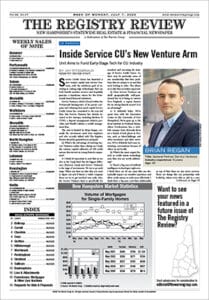Consumer inflation remained persistently high last month, boosted by gas, rents, auto insurance and other items, the government said April 10 in a report that will likely give pause to the Federal Reserve as it weighs when and by how much to cut interest rates this year.
Prices outside the volatile food and energy categories rose 0.4 percent from February to March, the same accelerated pace as in the previous month. Measured from a year earlier, these core prices were up 3.8 percent, unchanged from the year-over-year rise in February. The Fed closely tracks core prices because they tend to provide a good read of where inflation is headed.
The March figures, the third straight month of inflation readings well above the Fed’s target, provide concerning evidence that inflation is stuck at an elevated level after having steadily dropped in the second half of 2023. The higher inflation measures threaten to torpedo the prospect of multiple interest rate cuts this year. Fed officials have made clear that with the economy healthy, they’re in no rush to cut their benchmark rate despite their earlier projections that they would reduce rates three times this year.
“[The March inflation report] pours cold water on the view that the faster readings in January and February simply represented the start of new-year price increases that were not likely to persist,” Kathy Bostjancic, chief economist at Nationwide, said in a research note. “The lack of moderation in inflation will undermine Fed officials’ confidence that inflation is on a sustainable course back to 2% and likely delays rate cuts to September at the earliest and could push off rate reductions to next year.”
National Association of Realtors chief economist Lawrence Yun said in a statement the inflation readings meant mortgage interest rates were likely to rise above 7 percent due to bond markets’ reaction to the inflation data.
“March inflation figures were very bad, which also means bad news for interest rates,” Yun said. “The bond market immediately responded with high yields to compensate for the loss in purchasing power. Mortgage rates, unfortunately, will move a notch higher and are likely to cross above 7% in the upcoming weeks. In addition, the gigantic federal budget deficit will soak up more borrowing, thereby leaving less for mortgage borrowing.”
Yun also called out increases in rent data in the inflation report – possibly caused in part by a time-delay in the way the Federal Reserve measures rents – as “strange.”
“One strange data point is rent, which the official data shows at 5.8%. The unofficial data from the apartment industry indicates falling rent due to over-construction. If rent data calms, then overall inflation will automatically be lower. It is, therefore, possible to get to the 2% inflation target by year’s end, even with bumps and delays,” Yun said.
On Wall Street, traders sent stock futures tumbling and bond yields rising, reflecting fear that the Fed may delay interest rate cuts indefinitely.
Early this year, Wall Street traders had projected that the Fed would cut its key rate up to six or seven times in 2024. In March, Fed officials signaled that they envisioned three rate cuts. But elevated inflation readings for January and February – along with signs that economic growth remains healthy – led several Fed officials to suggest that fewer rate cuts may occur this year.
Chair Jerome Powell has stressed in recent months that the Fed’s policymakers need more confidence that inflation is steadily slowing to the Fed’s 2 percent target. Powell’s stance has elevated the profile of the monthly inflation reports, which can determine when and by how much – or even whether – the Fed will reduce its key rate this year.

